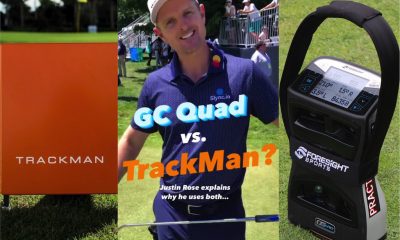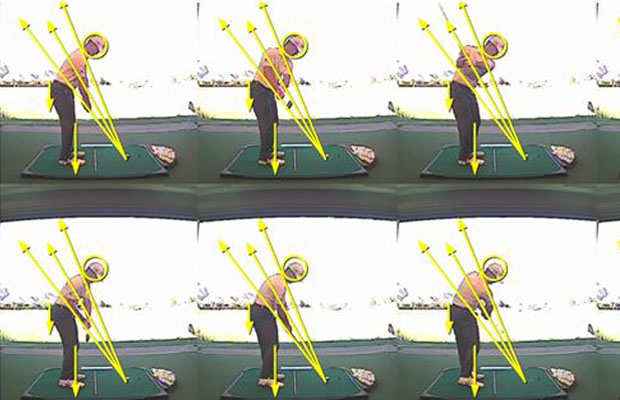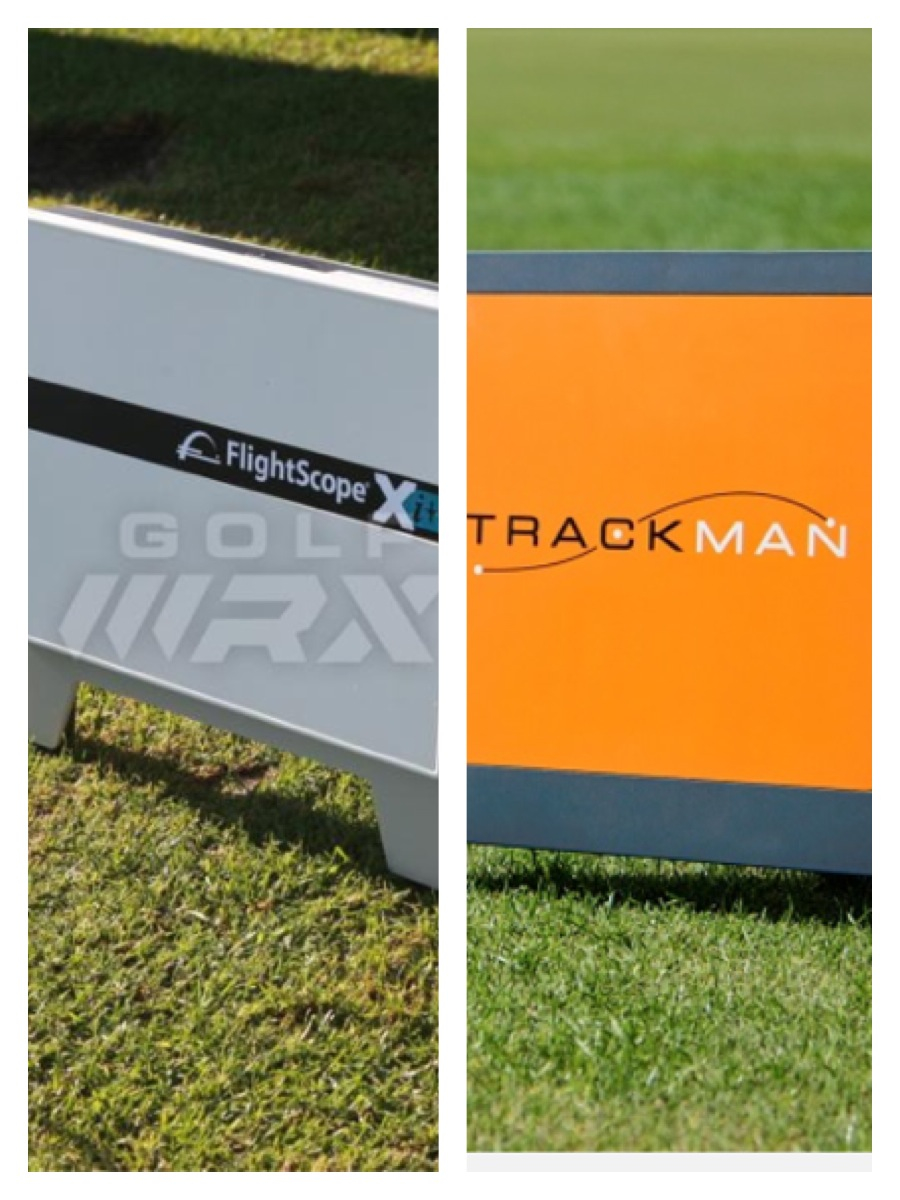Opinion & Analysis
The Dan Plan: Keep your gear in line with your skill set

My last post was about my experience at Titleist’s Oceanside Test Facility, and what it means to get fit by some of the best in the industry. The fitting process was very informative and positive, so I was excited to get my new custom-fit clubs. I couldn’t wait to break them in, get some launch monitor data and see how they matched up to my old gamers.
I was sold on the performance of the clubs at Oceanside, but I still wondered how much the fitting would affect my ball striking numbers at my home course. I was especially curious because my previous clubs were only a year old. But then again, I’d come a long way in that one year.
When I was last fit, I had never broken 80 and never played in a tournament. Since then, I have put in one third of my 4,200 practice hours, shot rounds of 73 and played in 12 tournament rounds with a low score of 80 on a couple occasions. It’s been a growing year and so much has changed.
After hitting each new stick five times (to get a general average of how they performed) and comparing the results to a similar test I had done a few months ago, I was pretty surprised at some of the differences.
Although my old clubs were from Nike and my new ones are from Titleist, this post is not about comparing two different club manufacturers. It’s an eye-opener about how important it is for golfers to keep their gear in line with their skill set.
Below is a chart that gives my launch monitor numbers for my previous sticks:
Launch monitor numbers were gathered using Trackman and range balls from a grass range and with the data “normalized” for ideal conditions.
One of the largest areas of concern with my old clubs was that I didn’t have very good gapping in my distances with some of the clubs. In particular, my 6 iron, 5 iron and 4 hybrid were scary close in profile, and I had a rather large gap between my 9 and 8 irons. I never quite understood the reason for that, and I am still not 100 percent sure why that was occurring. I had my clubs checked, and all of them had the correct lofts and lengths.
Also, I didn’t feel like my mid-iron swing was as bad as it was on paper, and with the amount that I practiced with them I was mystified as to why the overlap and lack of distance was happening. For some reason, though, I was not delivering those clubs to the ball well.
A large part of me assumed that it was 100 percent my swing that was causing the numbers to be a bit off, but I was still curious what new gear could do for my game. When the clubs arrived, I didn’t know if things would be the exact same or if some differences would appear in the data. After hitting the irons (they arrived first) for two days, I got the launch monitor out and gathered some numbers in the same fashion that I had with my previous clubs. Here are the new iron numbers — again I hit each club five times to get an average look at what they now do:
For a full write up of what’s in the new bag, please check out this article: http://www.golfwrx.com/91497/who-knows-how-to-fit-better-than-the-source/
To be honest, I’m not a pro at analyzing this data right now. That said, I am attending a TrackMan University class in Seattle this week and will know a ton more about what all of this actually means soon. For the time being, though, there are a few numbers that stand out to me immediately.
First off, my ball speed with the 9, 8, 7 and 6 irons are all somewhat similar from the old to the new, although the new clubs have more consistent steps between each iron. The distances are all fairly similar as was, but again the new clubs have better gaps.
The 5 iron is where it gets intriguing. My old 5 iron carried about the same as my 6 (I can attest it was the same on the course as the range) and my old 4 hybrid seemed to be roughly similar in flight distance. The new 5 and 4 irons are a different story. The consistent gapping goes through those irons and now I have sticks that carry about 185 and 194 yards. My new irons have nice gaps and have full-swing carries of everywhere between 140 and 195 yards. That’s a lot of distances covered.
Next comes the new hybrid, wood and driver. The old clubs carried 190, 204 and 235 respectively, and had decent gaps in ball speed between each club. The replacements came just a few days ago and I finally got the sticks on TrackMan yesterday. Here are the results:
The carry distances are now 210, 227 and 250. Granted, the hybrid is two degrees stronger than the old one. Regardless, it’s not the carry distance that matters, but having more distance is usually a good thing, especially when you are 5-foot-9 inches tall. The ball speeds are very similar between the old and new clubs, but the spin rates with the new sticks have gone way down, which is a testament to a successful club fitting. In fact, the spin rates with all of the new clubs are much more in line with PGA Tour averages, as are the launch angles.
There is a ton of data here to delve into and I hope to know more about it this week during the TrackMan University class. For now, I think that the differences between the new and the old clubs is significant and more than enough reason to make the switch. It will definitely provide a boost to my distances and confidence heading into this tournament season.
My goal now is to optimize my new clubs through better understanding this TrackMan data and by putting in hundreds (or thousands) of hours of practice with these new sticks. Titleist did its job and it did it well — now it’s my time to get to work.
Opinion & Analysis
The 2 primary challenges golf equipment companies face

As the editor-in-chief of this website and an observer of the GolfWRX forums and other online golf equipment discourse for over a decade, I’m pretty well attuned to the grunts and grumbles of a significant portion of the golf equipment purchasing spectrum. And before you accuse me of lording above all in some digital ivory tower, I’d like to offer that I worked at golf courses (public and private) for years prior to picking up my pen, so I’m well-versed in the non-degenerate golf equipment consumers out there. I touched (green)grass (retail)!
Complaints about the ills of and related to the OEMs usually follow some version of: Product cycles are too short for real innovation, tour equipment isn’t the same as retail (which is largely not true, by the way), too much is invested in marketing and not enough in R&D, top staffer X hasn’t even put the new driver in play, so it’s obviously not superior to the previous generation, prices are too high, and on and on.
Without digging into the merits of any of these claims, which I believe are mostly red herrings, I’d like to bring into view of our rangefinder what I believe to be the two primary difficulties golf equipment companies face.
One: As Terry Koehler, back when he was the CEO of Ben Hogan, told me at the time of the Ft Worth irons launch, if you can’t regularly hit the golf ball in a coin-sized area in the middle of the face, there’s not a ton that iron technology can do for you. Now, this is less true now with respect to irons than when he said it, and is less and less true by degrees as the clubs get larger (utilities, fairways, hybrids, drivers), but there remains a great deal of golf equipment truth in that statement. Think about it — which is to say, in TL;DR fashion, get lessons from a qualified instructor who will teach you about the fundamentals of repeatable impact and how the golf swing works, not just offer band-aid fixes. If you can’t repeatably deliver the golf club to the golf ball in something resembling the manner it was designed for, how can you expect to be getting the most out of the club — put another way, the maximum value from your investment?
Similarly, game improvement equipment can only improve your game if you game it. In other words, get fit for the clubs you ought to be playing rather than filling the bag with the ones you wish you could hit or used to be able to hit. Of course, don’t do this if you don’t care about performance and just want to hit a forged blade while playing off an 18 handicap. That’s absolutely fine. There were plenty of members in clubs back in the day playing Hogan Apex or Mizuno MP-32 irons who had no business doing so from a ballstriking standpoint, but they enjoyed their look, feel, and complementary qualities to their Gatsby hats and cashmere sweaters. Do what brings you a measure of joy in this maddening game.
Now, the second issue. This is not a plea for non-conforming equipment; rather, it is a statement of fact. USGA/R&A limits on every facet of golf equipment are detrimental to golf equipment manufacturers. Sure, you know this, but do you think about it as it applies to almost every element of equipment? A 500cc driver would be inherently more forgiving than a 460cc, as one with a COR measurement in excess of 0.83. 50-inch shafts. Box grooves. And on and on.
Would fewer regulations be objectively bad for the game? Would this erode its soul? Fortunately, that’s beside the point of this exercise, which is merely to point out the facts. The fact, in this case, is that equipment restrictions and regulations are the slaughterbench of an abundance of innovation in the golf equipment space. Is this for the best? Well, now I’ve asked the question twice and might as well give a partial response, I guess my answer to that would be, “It depends on what type of golf you’re playing and who you’re playing it with.”
For my part, I don’t mind embarrassing myself with vintage blades and persimmons chasing after the quasi-spiritual elevation of a well-struck shot, but that’s just me. Plenty of folks don’t give a damn if their grooves are conforming. Plenty of folks think the folks in Liberty Corner ought to add a prison to the museum for such offences. And those are just a few of the considerations for the amateur game — which doesn’t get inside the gallery ropes of the pro game…
Different strokes in the game of golf, in my humble opinion.
Anyway, I believe equipment company engineers are genuinely trying to build better equipment year over year. The marketing departments are trying to find ways to make this equipment appeal to the broadest segment of the golf market possible. All of this against (1) the backdrop of — at least for now — firm product cycles. And golfers who, with their ~15 average handicap (men), for the most part, are not striping the golf ball like Tiger in his prime and seem to have less and less time year over year to practice and improve. (2) Regulations that massively restrict what they’re able to do…
That’s the landscape as I see it and the real headwinds for golf equipment companies. No doubt, there’s more I haven’t considered, but I think the previous is a better — and better faith — point of departure when formulating any serious commentary on the golf equipment world than some of the more cynical and conspiratorial takes I hear.
Agree? Disagree? Think I’m worthy of an Adam Hadwin-esque security guard tackle? Let me know in the comments.
@golfoncbs The infamous Adam Hadwin tackle ? #golf #fyp #canada #pgatour #adamhadwin ? Ghibli-style nostalgic waltz – MaSssuguMusic
Podcasts
Fore Love of Golf: Introducing a new club concept

Episode #16 brings us Cliff McKinney. Cliff is the founder of Old Charlie Golf Club, a new club, and concept, to be built in the Florida panhandle. The model is quite interesting and aims to make great, private golf more affordable. We hope you enjoy the show!
Opinion & Analysis
On Scottie Scheffler wondering ‘What’s the point of winning?’

Last week, I came across a reel from BBC Sport on Instagram featuring Scottie Scheffler speaking to the media ahead of The Open at Royal Portrush. In it, he shared that he often wonders what the point is of wanting to win tournaments so badly — especially when he knows, deep down, that it doesn’t lead to a truly fulfilling life.
View this post on Instagram
“Is it great to be able to win tournaments and to accomplish the things I have in the game of golf? Yeah, it brings tears to my eyes just to think about it because I’ve literally worked my entire life to be good at this sport,” Scheffler said. “To have that kind of sense of accomplishment, I think, is a pretty cool feeling. To get to live out your dreams is very special, but at the end of the day, I’m not out here to inspire the next generation of golfers. I’m not out here to inspire someone to be the best player in the world, because what’s the point?”
Ironically — or perhaps perfectly — he went on to win the claret jug.
That question — what’s the point of winning? — cuts straight to the heart of the human journey.
As someone who’s spent over two decades in the trenches of professional golf, and in deep study of the mental, emotional, and spiritual dimensions of the game, I see Scottie’s inner conflict as a sign of soul evolution in motion.
I came to golf late. I wasn’t a junior standout or college All-American. At 27, I left a steady corporate job to see if I could be on the PGA Tour starting as a 14-handicap, average-length hitter. Over the years, my journey has been defined less by trophies and more by the relentless effort to navigate the deeply inequitable and gated system of professional golf — an effort that ultimately turned inward and helped me evolve as both a golfer and a person.
One perspective that helped me make sense of this inner dissonance around competition and our culture’s tendency to overvalue winning is the idea of soul evolution.
The University of Virginia’s Division of Perceptual Studies has done extensive research on reincarnation, and Netflix’s Surviving Death (Episode 6) explores the topic, too. Whether you take it literally or metaphorically, the idea that we’re on a long arc of growth — from beginner to sage elder — offers a profound perspective.
If you accept the premise literally, then terms like “young soul” and “old soul” start to hold meaning. However, even if we set the word “soul” aside, it’s easy to see that different levels of life experience produce different worldviews.
Newer souls — or people in earlier stages of their development — may be curious and kind but still lack discernment or depth. There is a naivety, and they don’t yet question as deeply, tending to see things in black and white, partly because certainty feels safer than confronting the unknown.
As we gain more experience, we begin to experiment. We test limits. We chase extreme external goals — sometimes at the expense of health, relationships, or inner peace — still operating from hunger, ambition, and the fragility of the ego.
It’s a necessary stage, but often a turbulent and unfulfilling one.
David Duval fell off the map after reaching World No. 1. Bubba Watson had his own “Is this it?” moment with his caddie, Ted Scott, after winning the Masters.
In Aaron Rodgers: Enigma, reflecting on his 2011 Super Bowl win, Rodgers said:
“Now I’ve accomplished the only thing that I really, really wanted to do in my life. Now what? I was like, ‘Did I aim at the wrong thing? Did I spend too much time thinking about stuff that ultimately doesn’t give you true happiness?’”
Jim Carrey once said, “I think everybody should get rich and famous and do everything they ever dreamed of so they can see that it’s not the answer.”
Eventually, though, something shifts.
We begin to see in shades of gray. Winning, dominating, accumulating—these pursuits lose their shine. The rewards feel more fleeting. Living in a constant state of fight-or-flight makes us feel alive, yes, but not happy and joyful.
Compassion begins to replace ambition. Love, presence, and gratitude become more fulfilling than status, profits, or trophies. We crave balance over burnout. Collaboration over competition. Meaning over metrics.
Interestingly, if we zoom out, we can apply this same model to nations and cultures. Countries, like people, have a collective “soul stage” made up of the individuals within them.
Take the United States, for example. I’d place it as a mid-level soul: highly competitive and deeply driven, but still learning emotional maturity. Still uncomfortable with nuance. Still believing that more is always better. Despite its global wins, the U.S. currently ranks just 23rd in happiness (as of 2025). You might liken it to a gifted teenager—bold, eager, and ambitious, but angsty and still figuring out how to live well and in balance. As much as a parent wants to protect their child, sometimes the child has to make their own mistakes to truly grow.
So when Scottie Scheffler wonders what the point of winning is, I don’t see someone losing strength.
I see someone evolving.
He’s beginning to look beyond the leaderboard. Beyond metrics of success that carry a lower vibration. And yet, in a poetic twist, Scheffler did go on to win The Open. But that only reinforces the point: even at the pinnacle, the question remains. And if more of us in the golf and sports world — and in U.S. culture at large — started asking similar questions, we might discover that the more meaningful trophy isn’t about accumulating or beating others at all costs.
It’s about awakening and evolving to something more than winning could ever promise.




















